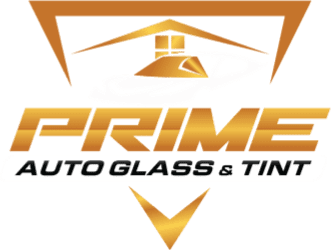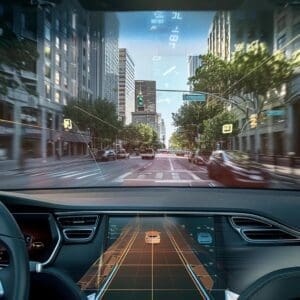This article will cover the importance of ADAS (Advanced Driver-Assistance Systems) windshield calibration, focusing on how it ensures the proper functioning of these safety systems. We will explore the reasons why calibration is necessary, such as windshield replacement or vehicle repair delving into different calibration methods, potential consequences of improper calibration, and the role of qualified technicians in the process.
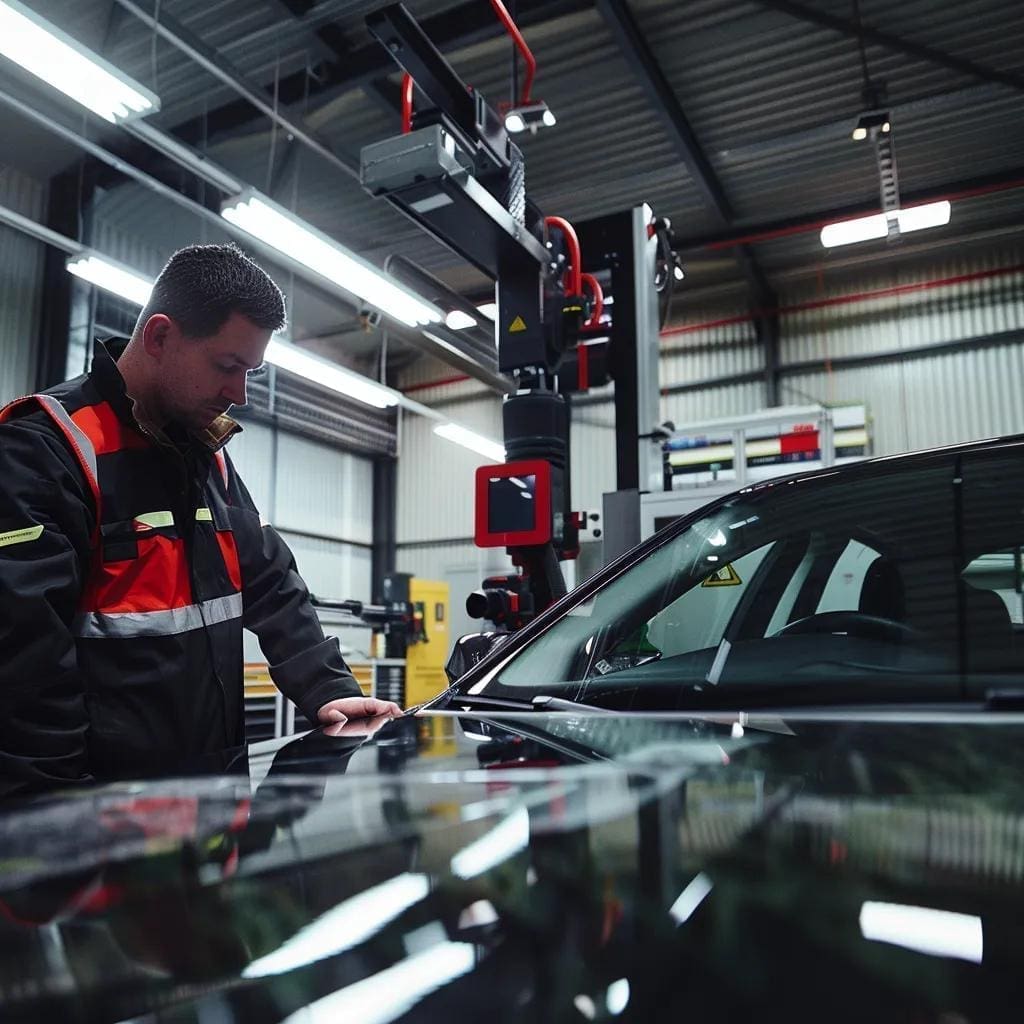
ADAS Windshield Calibration: Why It’s Crucial After Replacement
Windshield replacement often shifts the mounting of forward-facing cameras and radar sensors by mere millimetres, which can render lane departure warnings and collision avoidance features inaccurate. This misalignment disrupts the optical axis and sensor geometry, compromising system precision and increasing the risk of false alerts or missed hazards. Proper calibration realigns each sensor to OEM specifications, restoring reliable performance and safeguarding your drive.
ADAS Calibration and Safety Systems
Advanced Driver-Assistance Systems (ADAS) rely on precise sensor alignment for optimal performance. Calibration ensures that systems like lane departure warning, automatic emergency braking, and adaptive cruise control function correctly, enhancing vehicle safety and driver assistance capabilities. Misalignment can lead to system failures, increasing the risk of accidents.
How Does Windshield Replacement Affect ADAS Sensors and Cameras?
Windshield replacement can alter camera tilt, sensor distance and mounting angle, affecting the field of view for lane keeping and pedestrian detection. Even a small deviation in calibration distance or angle causes errors in object recognition and distance measurement. Correcting these shifts ensures each ADAS component functions in concert with the vehicle’s safety windshield replacement software.
When Should You Get ADAS Calibration Beyond Windshield Replacement?
In addition to glass replacement, ADAS calibration is required after front-end collisions, suspension work and steering alignment adjustments. Activation of warning lights related to cameras or radar also signals the need for recalibration. Addressing each event promptly prevents degraded sensor accuracy and maintains full feature availability.
What Are the Risks of Skipping ADAS Calibration?
Skipping calibration risks compromised emergency braking, erratic lane departure warnings and unreliable adaptive cruise control engagement. Misaligned sensors can fail to detect obstacles or trigger false activations, creating liability in the event of an accident. Ensuring calibration minimizes these safety and financial consequences.
What Are the Types of ADAS Windshield Calibration?
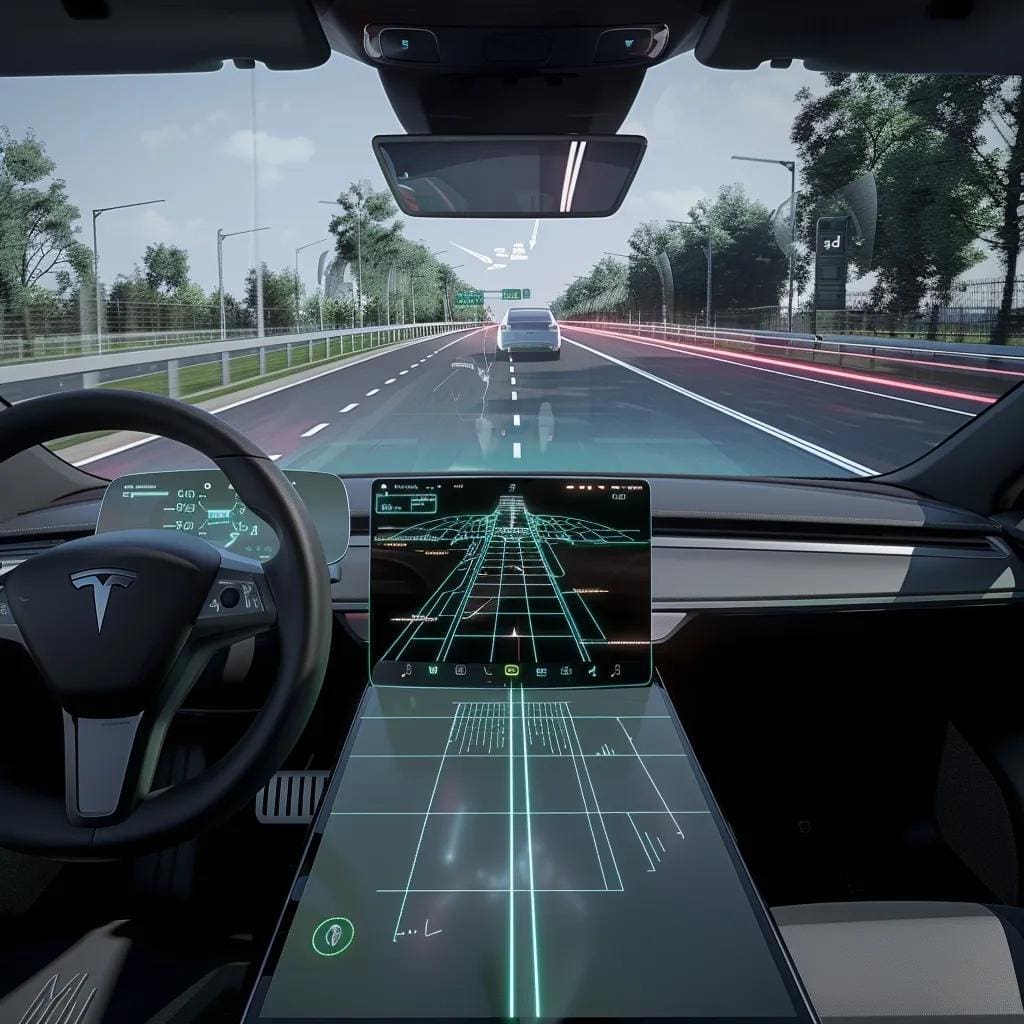
ADAS windshield calibration requires specific methods—static for controlled realignment and dynamic for on-road validation. The following table compares each approach:
| Calibration Method | Calibration Setting | Core Equipment |
|---|---|---|
| Static Calibration | Indoor facility with flat surface | OEM targets, laser level |
| Dynamic Calibration | On-road driving under varied conditions | GPS-enabled software, drive protocols |
| Combined Calibration | Both controlled and on-road environments | Static and dynamic toolsets |
Each calibration method addresses distinct alignment challenges, and some vehicles mandate both to satisfy OEM guidelines.
What Is Static ADAS Calibration and How Is It Performed?
Static calibration realigns sensors in a fixed position using standardized targets and laser-guided tools. Technicians position the vehicle on a level surface, set up reference boards at precise distances and adjust camera mounts to match OEM data. This method ensures exact optical alignment before road verification.
What Is Dynamic ADAS Calibration and When Is It Required?
Dynamic calibration validates sensor performance through a controlled drive sequence. The vehicle is driven at specified speeds with programmed steering inputs while software monitors and adjusts camera and radar responses. This real-world approach fine-tunes algorithms under actual driving conditions.
When Is Combined Static and Dynamic Calibration Needed?
Combined calibration applies when OEM standards demand both target-based alignment and on-road validation for maximum accuracy. Advanced safety systems with multiple sensors or certain luxury models often require this dual procedure to guarantee consistent feature performance.
How Is the ADAS Windshield Calibration Process Performed Step-by-Step?
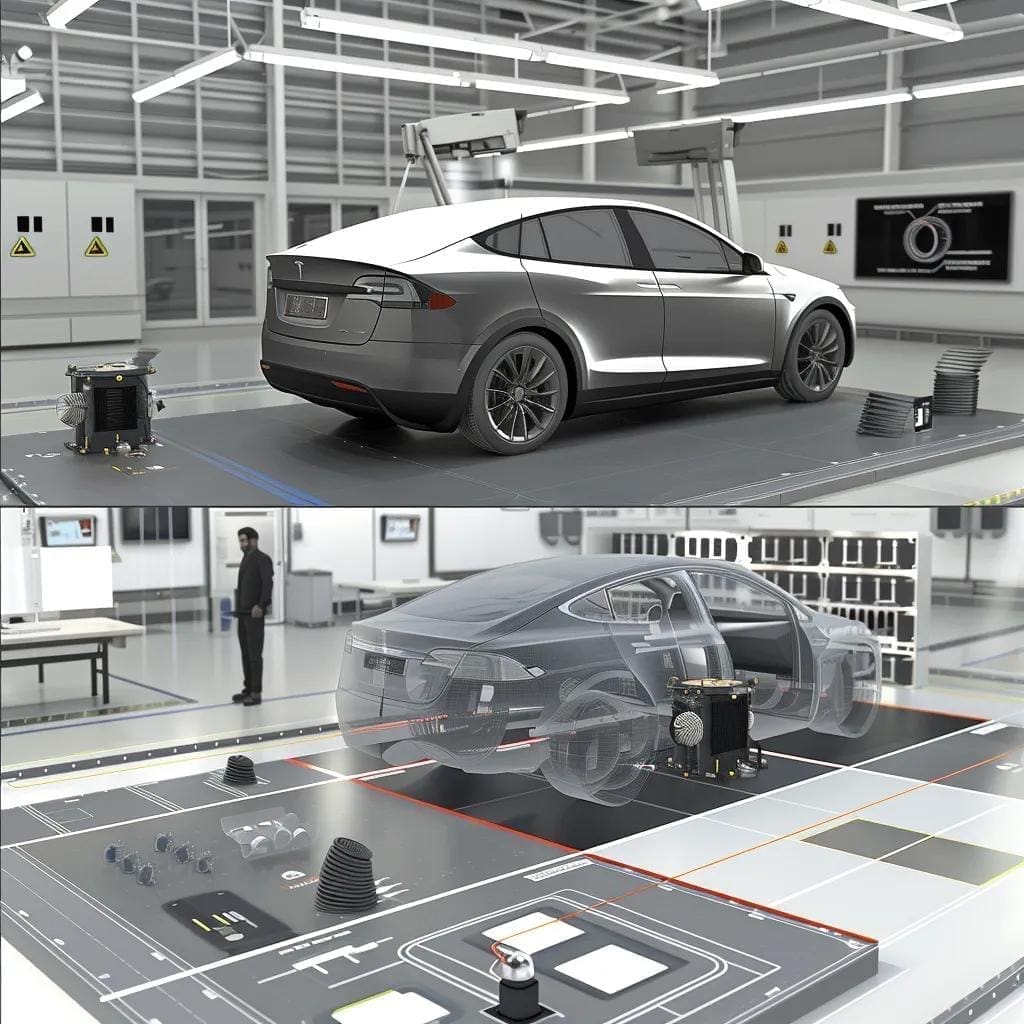
Restoring ADAS functionality follows a structured five-step sequence that ensures complete sensor realignment:
| Step | Procedure | Outcome |
|---|---|---|
| 1. Pre-Calibration Assessment | Diagnostic scan of ADAS modules | Identifies faults |
| 2. Vehicle & Environment Preparation | Level surface, light control | Stable baseline |
| 3. Target & Equipment Setup | Position OEM targets, lasers | Precise reference points |
| 4. Software-Guided Alignment | Execute OEM calibration routines | Adjusts sensor parameters |
| 5. Post-Calibration Verification | Test drive and system checks | Confirms accuracy |
This sequence sets the stage for detailed procedures, from initial diagnostics to final system validation.
What Happens During the Pre-Calibration Assessment and Diagnostics?
Technicians perform an on-board diagnostic scan, inspect sensor housings and verify software versions. Identifying error codes and hardware issues early ensures that each module is ready for precise alignment.
How Is the Vehicle and Environment Prepared for Calibration?
The vehicle is leveled, aftermarket accessories are removed and light reflections are minimized. A controlled environment prevents calibration errors caused by uneven positioning or glare.
How Are Calibration Targets and Equipment Set Up?
Reference boards are installed at OEM-specified distances and angles. Laser levels align with target markings to establish exact optical parameters that guide the calibration software.
What Does the Software-Guided Calibration Involve?
Calibration software communicates with ADAS modules to adjust internal offsets and verify sensor synchronization. Automated routines iteratively measure and fine-tune camera and radar outputs until they fall within factory tolerances.
How Is Post-Calibration Testing and Verification Conducted?
A controlled road test engages lane departure warnings, adaptive cruise control and emergency braking functions. Technicians confirm that sensor readings align with vehicle telemetry, ensuring all systems respond accurately to real-world stimuli.
Which ADAS Safety Features Depend on Proper Windshield Calibration?
Proper windshield calibration underpins critical safety systems such as lane departure warning, automatic emergency braking and adaptive cruise control. It also supports traffic sign recognition and blind spot monitoring, ensuring consistent object detection and driver assistance across diverse scenarios.
How Does Calibration Affect Lane Departure Warning and Lane Keep Assist?
Calibration aligns the forward-facing camera so lane markings remain centered in its field of view. This precise alignment improves lane departure alerts and enhances corrective steering engagement.
Why Is Calibration Critical for Automatic Emergency Braking?
Accurate calibration synchronizes radar and camera inputs to detect collision threats correctly. Properly aligned sensors enable the system to trigger timely braking and reduce impact severity.
What Role Does Calibration Play in Adaptive Cruise Control?
Calibration ensures distance measurements are exact by aligning radar beam angles and camera perspectives. This precision allows adaptive cruise control to maintain safe following distances reliably.
How Are Traffic Sign Recognition and Blind Spot Monitoring Impacted?
Traffic sign recognition depends on an unobstructed camera view of road signs, while blind spot monitoring relies on precise sensor angles to detect adjacent vehicles. Calibration restores correct orientation for both features.
What Are the Typical Costs and Insurance Coverage for ADAS Calibration in Ottawa-Gatineau?
Cost factors include vehicle make and model complexity, calibration type and technician expertise. Insurance coverage for ADAS calibration often falls under comprehensive glass claims, reducing out-of-pocket expenses for calibrated services in the Ottawa-Gatineau area.
Cost Factors in ADAS Calibration
The cost of ADAS calibration varies based on several factors, including the vehicle’s make and model, the type of calibration required (static, dynamic, or combined), and the expertise of the technician. Insurance coverage for calibration is often included in comprehensive glass claims, potentially reducing out-of-pocket expenses for the vehicle owner.
What Factors Influence the Cost of ADAS Windshield Calibration?
Calibration cost varies by the number of sensors, calibration method (static, dynamic or combined) and required equipment. Technician training and service location also affect pricing.
What Is the Average Price Range for Static, Dynamic, and Combined Calibration?
In Ottawa-Gatineau, static calibration typically ranges from CAD 150–300, dynamic calibration from CAD 200–400, and combined procedures from CAD 300–600, depending on vehicle specifications.
Is ADAS Calibration Covered by Auto Insurance in Canada?
Most Canadian insurers include ADAS calibration in glass replacement claims. Policyholders should review their coverage details, as deductibles and preapproval requirements can vary.
Why Choose Prime Auto Glass and Tint for Your ADAS Windshield Calibration Needs in Ottawa-Gatineau?
Prime Auto Glass and Tint provides ADAS windshield calibration service using OEM-certified equipment and certified technicians to meet manufacturer standards and restore full safety functionality efficiently.
What Certifications and Training Do Our Technicians Have?
Our technicians hold manufacturer-specific ADAS calibration certifications and complete ongoing training, ensuring expertise in the latest systems and alignment protocols.
How Does Our OEM-Certified Equipment Ensure Accurate Calibration?
We use OEM-approved targets, lasers and software tools that match factory specifications. This equipment delivers precise sensor alignment and maintains warranty compliance.
What Makes Our Service Fast, Reliable, and Safety-Focused?
Prime Auto Glass and Tint combines streamlined calibration workflows with thorough diagnostics and post-calibration validation, delivering dependable service and peace of mind for every vehicle owner.
Every step in the ADAS calibration journey restores the precise alignment that modern driver assistance systems require. Proper calibration enhances safety features, delivering accurate lane keeping, collision avoidance and cruise control performance. Ottawa-Gatineau drivers can rely on specialized expertise and OEM-certified tools to maintain their vehicle’s ADAS integrity. Contact Prime Auto Glass and Tint today to schedule your calibration and ensure every safety system operates correctly.
Frequently Asked Questions
What are the signs that my vehicle needs ADAS calibration?
Common indicators that your vehicle requires ADAS calibration include warning lights on the dashboard related to the ADAS features, inconsistent performance of safety systems like lane departure warnings or automatic emergency braking, and noticeable changes in how these systems respond. If you experience erratic alerts or if the systems fail to engage when needed, it’s crucial to have your ADAS calibrated to ensure optimal functionality and safety.
Can I perform ADAS calibration myself?
ADAS calibration is a complex process that requires specialized equipment and expertise. While some basic maintenance can be done at home, calibration should be performed by certified technicians using OEM-approved tools to ensure accuracy. Attempting to calibrate ADAS systems without proper training and equipment can lead to misalignment, compromising safety features and potentially voiding warranties.
How long does the ADAS calibration process take?
The duration of the ADAS calibration process can vary based on the method used and the vehicle’s complexity. Typically, static calibration may take about 1 to 2 hours, while dynamic calibration can take longer, often requiring a test drive of 30 minutes to an hour. Combined calibration, which includes both methods, may take several hours. It’s best to consult with your service provider for a more accurate estimate based on your specific vehicle.
Is there a warranty on ADAS calibration services?
Many service providers offer warranties on their ADAS calibration services, which can vary in length and coverage. A warranty typically ensures that if any issues arise related to the calibration within a specified period, the service provider will address them at no additional cost. Always inquire about warranty details before proceeding with calibration to ensure you have adequate protection for your investment.
What should I do if my ADAS features are still malfunctioning after calibration?
If your ADAS features continue to malfunction after calibration, it’s essential to return to the service provider for further diagnostics. There may be underlying issues such as damaged sensors, software glitches, or other mechanical problems that need addressing. A thorough inspection can help identify any additional repairs needed to restore full functionality to your vehicle’s safety systems.
Are there any specific vehicle models that require more frequent ADAS calibration?
Some vehicle models, particularly luxury brands or those equipped with advanced safety features, may require more frequent ADAS calibration due to their complex systems. Additionally, vehicles that have been involved in accidents or have undergone significant repairs may also need calibration more often. Always refer to your vehicle’s owner manual or consult with a technician to understand the calibration needs specific to your model.
Conclusion
Ensuring proper ADAS windshield calibration is essential for maintaining the safety and functionality of your vehicle’s advanced driver-assistance systems. By choosing a service that utilizes OEM-certified equipment and trained technicians, you can trust that your calibration will restore optimal performance for features like lane departure warnings and automatic emergency braking. Don’t compromise on safety; schedule your ADAS calibration with Prime Auto Glass and Tint today. Experience peace of mind knowing your vehicle is equipped to handle the road ahead.
